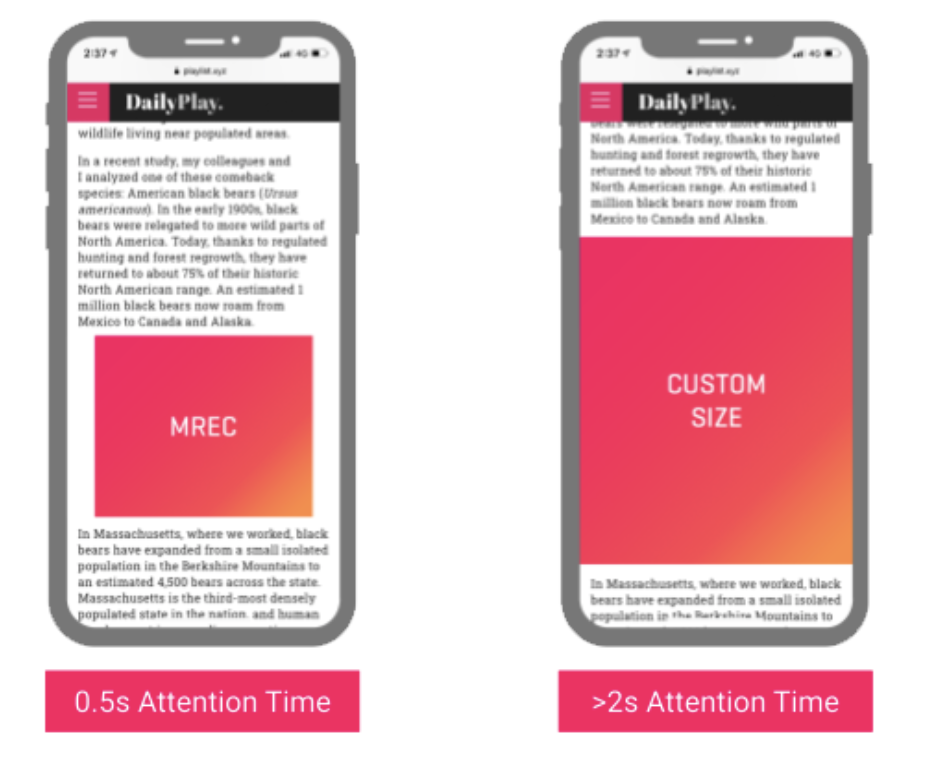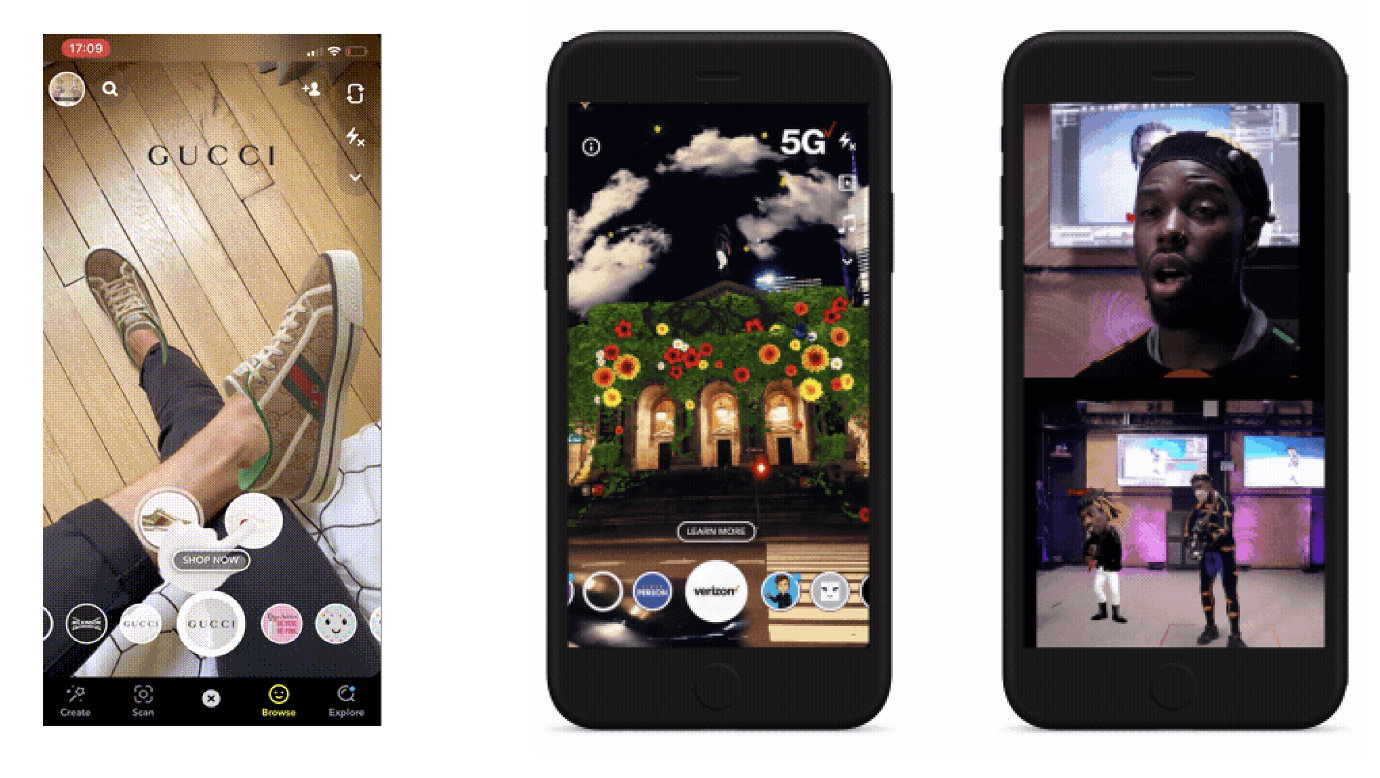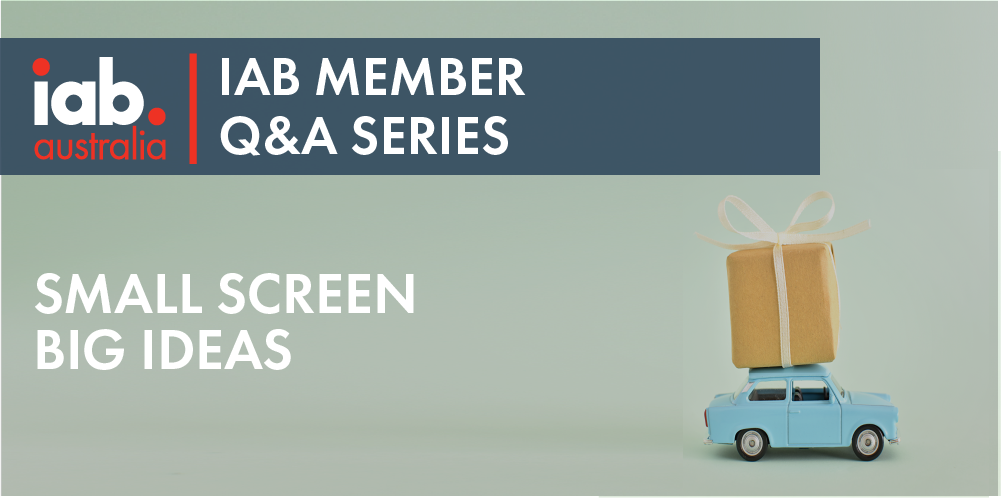These small screens can pack a big punch for brands and advertisers but at times can be underestimated on just what can be done within the in-app environments. This week we will explore the opportunities on mobile and in-app and showcase how brands can truly leverage this platform. Whether you are looking to maximise the impact of your next campaign or highly target consumers with a key piece of creative, we will have our mobile experts show what is truly possible in this space and what to keep an eye out for in 2021!
Thanks to InMobi, Playground xyz, Snap Inc, LinkedIn, Interplay Media and Kargo for their contributions.
Richard O’Sullivan, Vice President and General Manager, AUNZ, InMobi
What makes the mobile in-app environment so unique from a creative perspective?
Australia has emerged as a mobile first market in recent years which now represents over 42% of media spend (2020). Therefore, as an always-on & ever present device its ability to tap into real-world context is unique, creating immersive, snackable, interactive experiences that are unparalleled. The unique creatives made possible by harnessing native features of the phone such as haptic controls, motion sensors, augmented reality filters, or even shopping right on the ad, make the possibilities limitless. Combining this with the medium’s ability to personalize experiences at scale, through data & signals, and the opportunity to encourage users to take immediate action makes the experience on mobile the most holistic compared to other channels. Here are a few of our favourite mobile ad experiences:
What ad formats and creative options have you embraced more with your clients this year? Why did you recommend greater use of these options?
The media landscape has seen consolidation/ fragmentation driven by advancements in automation, data & machine learning. Through the growth of programmatic this has included the commoditisation of both media and data but not creativity. Creativity has though been forced to adapt and adopt to technology’s influence. At InMobi we have been market leaders in mobile creative since the acquisition of Sprout 10-years ago and with the unprecedented growth of programmatic we intentionally bifurcated the creative process in 2020 to serve two distinct customer segments:
- High Impact/ High Complexity Ad Creatives: Development of rich interactive and immersive brand experiences in popular formats. These include Dynamic Creative Optimizations to drive personalisation at scale, Playable and Micro Videos which drive engagement and interactivity. These require greater involvement of Advertiser/ Agency who are a part of the planning process right at the get go. Here’s an example from Ford Ranger with 4,000+ ad permutations of the customer journey possible.
- High Impact/ Low Complexity Ad Creatives: These creatives are purpose built for programmatic, more transactional and effectively represent real-time creative execution. When speed is high priority without sacrificing quality/ increasing cost we leverage Social Display, Shoppable Media (below) & Vertical Video formats for high impact.

______
Rob Hall, CEO, Playground xyz
How do brands earn attention in mobile publishing environments?
Just like brands, publishers want to engage their audiences for as long as possible meaning a focus on producing medium and long form content. When it comes to reading these articles on mobile, this means scrolling, and a lot of it.
Consumers are now hard wired to scroll quickly past (and not pay attention to) anything that they deem as not of interest to them. This ingrained behaviour creates some really interesting considerations for brands as they’re looking to earn consumer attention when advertising in publishing environments.
Take the humble 300×250 ad format for instance – it’s by far the most common ad you’ll encounter as you scroll through a page. It was designed to sit between paragraph breaks so that it would capture attention as users come past. However on average, it gets looked at for less than half a second.
Based on a whitepaper we did with Kantar, each additional second someone looks at an ad it delivers up to 11% more awareness and 7% more brand recall – so we clearly have an incentive to get users to stick around longer. The good news is that brands can earn valuable extra attention, with 3 simple changes:
- The first is the ad format. Familiarity is the enemy of attention and by changing the shape and size of the ad to something less common, we break the scrolling monotony and are more likely to draw the eye in.

- The second is the creative. As a baseline, the visuals need to be punchy, copy needs to be minimal and the whole thing simple enough to be consumed within a couple of seconds. But to really stop people in their tracks we need to be building ads that change and react to the user as they scroll past. Things like tying animation sequences to the user’s scroll can be very powerful.
- The final piece in the attention puzzle is the actual articles we land on. The latest data from our Attention Intelligence Platform shows that some articles (on the same website) generate much higher attention for a piece of creative than others – up to 200% difference. On analysis, the articles that get higher attention are very often those that are contextually relevant; music to everyone’s ears given the impending changes to 3rd party cookies.
By making these optimisations marketers can go from having their ads looked at for 0.5s to north of 4.0s (i.e. a 8x increase) which drives not only their digital KPIs but importantly, builds key brand metrics too.
Cutting through the clutter to maximise attention on ads is both an art and a science. But with consumer attention being an increasingly scarce resource there’s a lot of upside for the brands who make the effort.
____
Stephen Anderson, Creative Strategist, Snap Inc.
What ad formats and creative options have you embraced more with your clients this year? Why did you recommend greater use of these options?
We believe that the current crisis has accelerated the digital transformation across many businesses, and that the heightened levels of activity we are seeing today will lead to a sustained uplift in the digital economy over time.
Consumer behaviour is rapidly changing and many are increasingly turning to digital behaviours across every aspect of their lives, including communication, commerce, entertainment, fitness, and learning. As part of that change, many have started to incorporate augmented reality (AR) as part of their daily lives. Where other traditional formats had to rethink their strategy in times of lockdown, AR has shown that it can go beyond any real-world restrictions.
We are witnessing a massive shift towards technically enabled products and businesses and how people are buying and discovering new brands. As we embrace digital transformation, and adapt to the evolution of technology, it is exciting to see how brands are leveraging augmented reality as part of their marketing and sales strategy. From Gucci releasing a new pair of shoes via AR Try-On Lenses on Snapchat to watching a world first AR concert brought to you by 5G and Verizon, the opportunities are endless.
 With AR, your customer is no longer just passively viewing content, as advertisements popping up on screen simply don’t offer the type of opt-in branded interaction that AR is able to offer. Whether the AR experience needs to drive awareness, shareability or conversion, this technology has given brands the opportunity to rethink how they connect with their consumers, with almost guaranteed engagement at mass scale.
With AR, your customer is no longer just passively viewing content, as advertisements popping up on screen simply don’t offer the type of opt-in branded interaction that AR is able to offer. Whether the AR experience needs to drive awareness, shareability or conversion, this technology has given brands the opportunity to rethink how they connect with their consumers, with almost guaranteed engagement at mass scale.
For 2021, how should brands be approaching in-app across mobile?
Contrary to popular belief, attention isn’t a diminishing commodity. Consumers are looking for brands that would be able to connect with them directly. The one size fits all methodology for Social won’t cut it anymore. For brands, it is all about finding the right moment, within the right experience to deliver a meaningful experience/content to your customer. Brands, agencies, and clients need to rethink how they evaluate digital media; moving towards quality interaction that’s designed for audiences behaviour and is mobile first.
Augmented reality (AR) experiences are not a gimmick. We have seen clear successful use cases with tangible commercial impact that drive real engagement. AR is relatively simple and cost-effective to take to market. If you want to show a tropical island, it does not have to come with a hefty travel expense bill for production.
Brands should also start to look beyond pure utility and efficiency, they need to start planning and evaluating based on purpose and integrity. Does the in-app platform share the same values around privacy and authenticity that users are looking for? Do they have a community that really cares about each other and the platform at large? It is important to remember that the Gen Z and Millennial generations are digitally native and adopt new technologies quickly, which will help them continue to drive change. This same group are the consumers of the future, have significant lifetime values for our advertising partners, and are in the process of building brand loyalties, which makes our audience extremely attractive to advertisers.
_____
Claire Austin, Content Solutions Consultant ANZ, LinkedIn
What ad formats and creative options have you embraced more with your clients this year? Why did you recommend greater use of these options?
Our data illustrates that brands who use a mix of different in-app platform solutions get better results, especially in B2B where sales cycles are much longer. As a result, we often don’t recommend a single format, but instead work with our clients to understand their objectives and recommend a multi-product approach to achieve this. Speaking to out of market buyers is very different to speaking to in market buyers, for example, which requires different approaches and solutions.
Over the past year, we have seen a greater focus on upper funnel thought leadership. Brands are increasing the value and support they offer customers, acting as always-on news outlets in their areas of expertise. Brands like Salesforce, NAB, CBA and Xero have done this well. As a result, formats like podcasts, scaled digital events and webinars have all increased and are being produced in mobile friendly formats demonstrating that brands are thinking more about how the customer is consuming the content.
Interestingly for creative effectiveness, System 1 conducted research which found ads containing the following elements worked slightly better; human connection, local solidarity, familiar scenarios and nostalgia. This aligns with thought leadership content we have observed over the past year which focuses on care and community, particularly in this time of uncertainty. We have seen businesses in Technology and Financial Services doing this well, producing thoughtful creatives that are not only helping to retain customers, but also build brand equity with new customers.
What makes the mobile in-app environment so unique from a creative perspective?
The ability to A/B test, deliver multiple objectives from brand to lead generation, plus the capacity to personalise messaging for different members of the buying committee are all unique benefits of digital. However, three key elements that make the mobile in-app environment truly unique from a creative perspective are; community, it’s ‘on the go’ nature and evolving formats.
- Community: You can’t get this everywhere and it is something you earn overtime through great content and creativity. Creativity fuels organic reach and is often underrated in the community build – it has probably been the most under utilised asset by marketers during the pandemic! LinkedIn recently conducted a global research study, The Age of Agility, which found social proofing your brand is an absolute must right now, we need to spark the virtual water cooler and creativity is key to getting this right. Getty Museum did a fantastic job of this with ‘The Getty Museum challenge’ last year, Netflix always brings the humour, and Tourism NZ recently launched a campaign that encourages more diverse and creative social posting from travellers.
- On the go: You can’t underestimate the creative perspective of ‘on the go’ content. We think creativity means something we look at, but it is audio too creating a big opportunity for marketers to produce something different and unique for mobile. We are seeing a rise in the consumption of ‘on the go’ whether that is for news, to relax, or for company updates. Clubhouse is a brilliant example of an ‘on the go’ audio platform which has taken off in the US. I don’t think we’ve even scratched the surface of what this could be from a creativity standpoint.
- Evolving formats: What makes digital so exciting is the boundaries are always changing. Whether you like the experimental new formats or more traditional in app experiences, the opportunity is there to challenge the norm and do something different. Even on LinkedIn for example, we are seeing a rise of 3D video ads from brands. Stories and alternative content solutions are exploding across digital platforms with examples also including AR technology, enabling users to try on items like cosmetics and clothes pre purchase. The evolution of features in mobile apps allows brands to differentiate themselves, be bold in their marketing and redefine creativity on an ongoing basis.
_____
Ben Murray, Director of Products and Technology, Interplay Media
Can you showcase a brand or advertiser that has utilised in-app well?
Defence Force Recruitment wanted a strategy to target young, actively fit males aged 18-34 as part of a recruitment drive. We utilised fitness tracking apps to run the campaign as they have a rich array of personal data segments at their disposal which allowed us to target “point of sweat” interstitials on entry level running times for the army (In this example for males aged 18-25 they are required to run 2.4km in under 11:18 (mins:sec) and for 25-34 under 12:18 – visit the army physical training requirements doc here for more information).
When we ran the campaign we ensured the interstitials were triggered based on the different age, gender and times recorded data segments when a male runner ran the 2.4km distance times with the following interstitial; Defence Force Recruitment – Fitness Drive Campaign Creative
This simple, but effective use of brand messaging, triggered with detailed data segments resulted in over 3.05% CTR response. The ad was relevant to the platform used, and the “Point of Sweat” messaging communicated to the audience for the Defence forces recruitment drive.
What ad formats and creative options have you embraced more with your clients this year? Why did you recommend greater use of these options?
As a network – we tend to have a higher proportion of publishers that are solely reliant on standard display units. Video pre-roll is expensive to operate and requires a significant investment should you look to do it properly. Therefore our focus has been on highly engaging units that can accommodate multiple features for clients.
Our main focus has been on working with our channel partners on strong data lead opportunities. This doesn’t necessarily have to be fancy high impact solutions; one of the most effective campaigns we have run recently is a very simple native execution that utilises daypart targeting functionality coupled with a strong channel focus in sport for live and post event(s).
High impact skins and mobile scroller units are also a focus. The main reason is they answer agencies viewability requirements of 90%+. They also provide strong data rich solutions.
Some of the most effective campaigns we have put together have utilised there capabilities for producing daypart messaging and other dynamic api features. This example of Bulk Nutrients utilising daypart targeting resulted in 50% higher engagement than a standard generic message. Below are links to multiple messages that are triggered based on your time of day (am or pm) or day of week:
______
Rob Leach, General Manager APAC, Kargo
Have you seen brands or advertisers taking greater chances with their campaigns within mobile environments and utilising what it has to offer?
Yes, absolutely, and part of that is our ability to measure the effects of these unique experiences. Audiences who were exposed to a Branded Takeover Big Brother ad execution were found to be twice as likely to watch the show, compared to those who did not view the Branded Takeover ad. This combination of impactful design, unique supply and measurability really lowers the perceived risk for brands to get more creative with their mobile execution and it’s really paid off. And this is true at the top of the funnel with high impact, but also at the bottom of the funnel, where we include engaging commerce features, product details, and other elements that create a lot more value within the ad.
For 2021, is the best yet to come? If so, what can we look forward to seeing?
We’re seeing a lot of interest in combining high impact and unique creative with targeting in order to get even better performance. Contextual targeting in particular is an efficient option that many brands are excited to test as they look for future-proof options in 2021 and beyond. Contextual relevance is not just a targeting option, it also matters a lot for the message itself, creating a full experience for the viewer when every element is considered and aligned. This all speaks to the growing focus on quality— quality content, quality ad design and ultimately a higher quality experience and better outcome.
